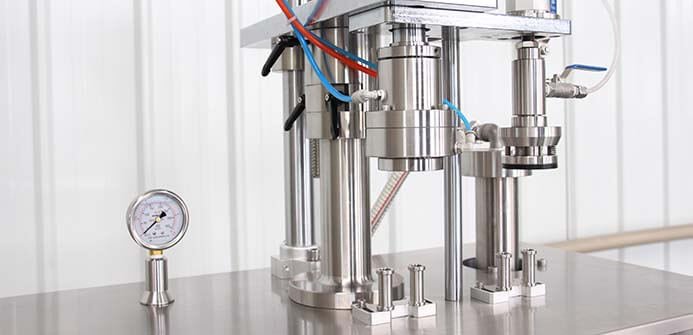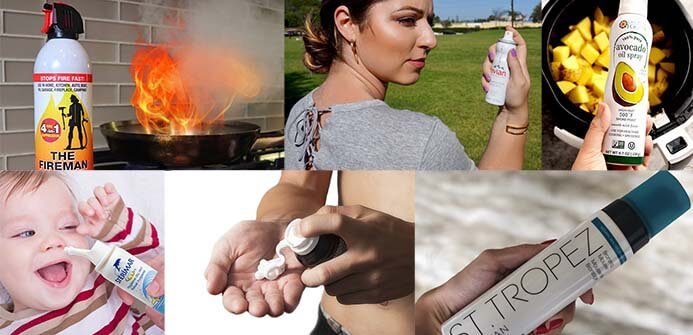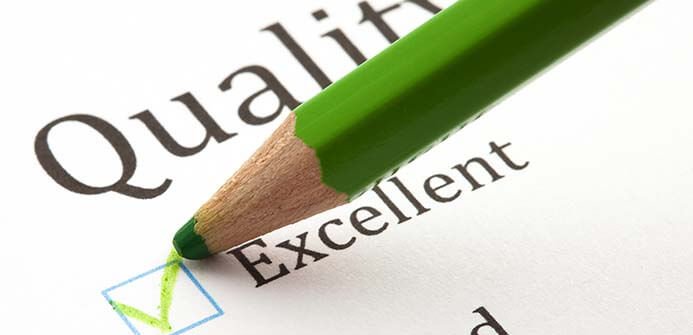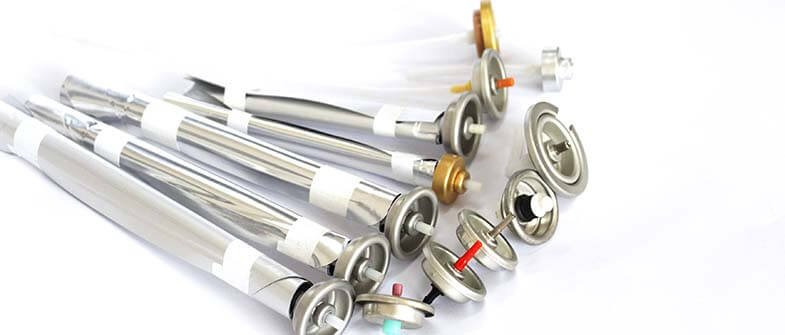Bag On Valve Aerosol Technology 101 [Part Two]
24/09/2019In my previous article “Bag On Valve Aerosol Knowledge 101 [Part One]”, we talked about the topics of:
1. The Story of Bag On Valve
2. What Is Bag On Valve
3. How Does Bag On Valve System Work?
4. What Are The Benefits of Using Bag On Valve?
In this article, we are going to continue the bag on valve theme with the following specific topics.
5. How To Fill The Bag On Valve Package?
6. The Applications of Bag On Valve Package
7. How to Determine Qualified Bag On Valve?
8. How To Control The Bag On Valve Finished Product Quality?
Let’s cut the crap and dive in directly.
5. How To Fill The Bag On Valve Package?
Different from the regular aerosol packaging process, the bov(bag on valve) package starts from gas filling first. The process mainly goes in the following 2 steps.
Different from the regular aerosol packaging process, the bov(bag on valve) package starts from gas filling first. The process mainly goes in the following 2 steps.
1) UTC Gas Filling & Crimping
2) TTV Pressure Liquid Filling
The bag on valve is firstly placed into the empty aluminum or tinplate aerosol can. Then, the can is put at the working location under the UTC head for gas filling and crimping.
UTC stands for Under The Cup. The bag on valve is lifted a little bit by the head vacuuming force so that there is a gap to let the gas filling take place.
The gas used in the bag on valve package system is usually Nitrogen or compressed air. The gas is filled into the empty can through the gap between the valve and the can open.
Once the gas filling inside the empty can reaches the targeted pressure, the vacuuming lifting force stops and the valve drops down to the can open. Then the crimping claw expands to crimp the valve onto the can open.
All these steps are completed under the same cup. And until now, the UTC gas filling and crimping is finished.
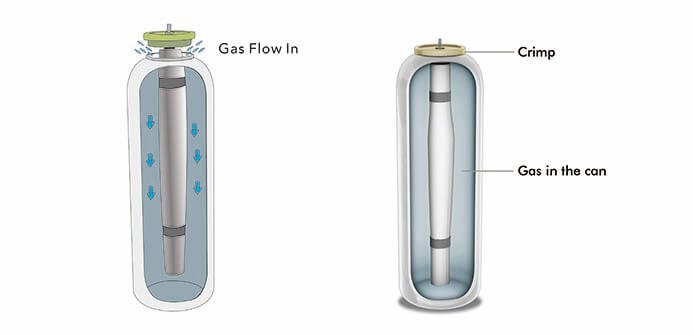
There is nothing except the gas(Nitrogen or compressed air) inside the can after the above process. So there is pressure(usually 0.3~0.5Mpa) inside. Then we need to fill the liquid formula into the bag.
The liquid formula is pushed through the piston metering cylinder, and squeezed inside the bag through the valve stem, which is called TTV(Through The Valve) method.
The bag space will expand once the liquid is filled in. So, the space left for the gas is narrowed down, resulting in the can inside pressure increasing. The pressure inside the can is usually 0.8Mpa around after the liquid formula is filled.
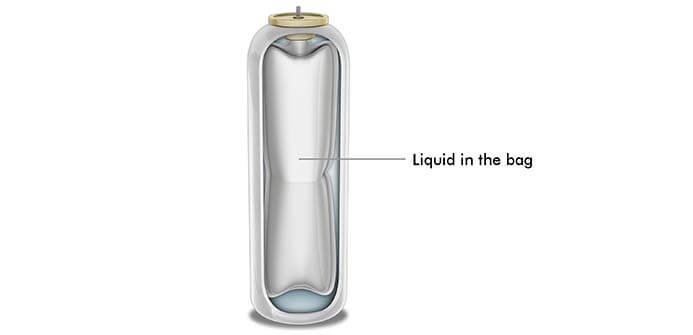
For your further convenience, here below is the video of bag on valve package filling applied fire extinguisher aerosol production.
6. The Applications of Bag On Valve Package
Bag on valve package is considered widely because of its outstanding advantages. The common applications are as below.
1) Beauty & Cosmetics: sunscreen spray, shaving foam, instant self-tanning spray, hair spray, facial spray, ect.
2) Pharmaceuticals: saline seawater nasal spray, first aid spray, wound spray, ear spray, ect.
3) Food: olive oil, coconut oil, ect.
4) Miscellaneous: fire extinguisher, disinfectants, ect.
The applications are not limited to above. Actually, new materials or products are coming into the market now and then. And there are always the possibilities to package them in the bov system.
7. How to Determine Qualified Bag On Valve?
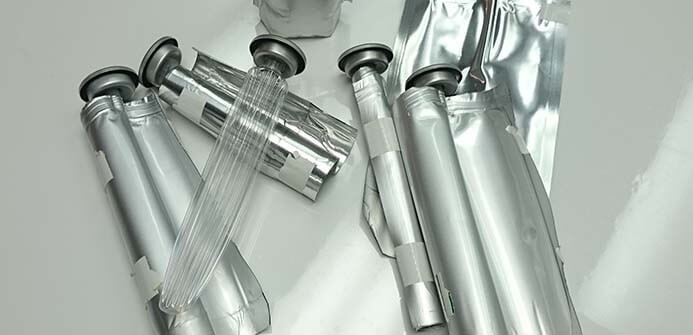
The bag on valve quality is directly related to the product’s quality and performance. Here below are some aspects related to the bag on valve quality inspection issues.
1) Lack of spring, stem, chamber, inner(outside) gasket, sealing ring
2) Lack of dip tube or dip tube blockage, cracking, serious dirty
3) The bag is broken, scratched, scaled, bubble, sand hole, not vacuumed, leakage, uneven cutting.
4) The bag and the chamber hot sealing is not tight, or not even/wrinkled.
5) Inner/outside gasket is broken.
6) The dip tube is not set well in the position.
7) The ribbon is not fastened well.
8) The color of the stem/chamber/mounting cup, ect. is not matched.
8. How To Control The Bag On Valve Finished Product Quality?
After the bag on valve aerosol product is produced, one critical step is to ensure the quality. It’d be a disaster for the end-users and the factory to let the unqualified products flow to the market.
Generally speaking, there are the following methods to check and ensure the quality of the finished products.
1) Water Bath Leakage Testing
Leakage is a typical quality issue for aerosol products. After the product is finished, there will be pressure inside the can, usually around 0.8Mpa.
To simulate the real situation, we usually submerge the finished products under hot water(50~55℃) for 3 minutes. During this period, the pressure inside the can will increase due to temperature increase. And if there is no bubble, that means the product is qualified and unlikely to leak in the real situation.
2) Inside Pressure Testing
The pressure inside the can is another factor to influence the product spray performance. If the pressure is not enough or too much, the spray pattern will not meet the perfect form. Therefore, we usually use a pressure gauge to test the finished product inside pressure. Different products require different pressure. But usually, 0.6~08Mpa is the typical pressure for bag on valve aerosol products.
3) Weight Checking
We produce massively the products, we need to make sure that every single product conforms with the standard. For example, we need to make sure every can contains the same volume of formula. The best way is to check the weight. The qualified product must be inside the tolerance.
4) Spraying Pattern
Usually, the spraying form is an element that the end-users care. Some products require fine and soft spray, like facial spray and self-tanning spray, ect. Some products require strong spray like fire extinguisher. This is related to the valve stem hole structure inside, and also the actuator structure. The best way to check the spraying pattern is to spray it out and observe the form.
Conclusion
Bag on valve technology has been developing since its birth. There are always new applications and innovations coming out. We’re open to discuss and share with anyone.
Recent Posts
-
2 Ways You Can Take to Avoid Aerosol Can Corrosion Leaks
 After many years of scientific research, it has been found that HFCs, which used to be used as aerosol propellants, have a certain destructive effect on the ozone layer, so the production of CFCs in Europe and the United States is restricted by law.
After many years of scientific research, it has been found that HFCs, which used to be used as aerosol propellants, have a certain destructive effect on the ozone layer, so the production of CFCs in Europe and the United States is restricted by law. -
23 Aerosol Propellant Losses Will Cost You Money and Ruin Your Plant
 Did you know that aerosol propellants can be lost in 23 places? It is not only the propellant gas and money that are lost, but also the possibility of destroying the plant. Since there is almost no way to monitor and measure the use of propellants, it is very easy to lose them
Did you know that aerosol propellants can be lost in 23 places? It is not only the propellant gas and money that are lost, but also the possibility of destroying the plant. Since there is almost no way to monitor and measure the use of propellants, it is very easy to lose them -
9 Key Factors to Consider will Make You Select the Right Aerosol Valves
 Aerosols have played an important role in people's daily lives since their invention, production and application in the 1920s. It has a wide range of applications, such as personal care, household care, pest control, medical solutions, industrial care and food, etc., bringing great convenience to human life.
Aerosols have played an important role in people's daily lives since their invention, production and application in the 1920s. It has a wide range of applications, such as personal care, household care, pest control, medical solutions, industrial care and food, etc., bringing great convenience to human life.
Maximize Your ROI
by Investing in Our Cost-Effective Aerosol Filling Machines.
Contact Us
Copyright© 2019 Dawsom Mechanical & Electrical Co., Ltd. All Rights Reserved.

